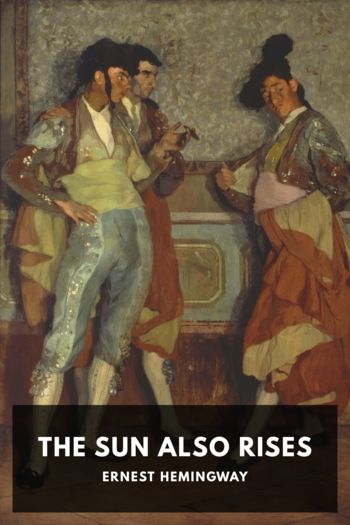Jolt!, Phil Cooke [reading women txt] 📗

- Author: Phil Cooke
Book online «Jolt!, Phil Cooke [reading women txt] 📗». Author Phil Cooke
Creativity is no different. We all start out amazingly creative, but as we grow older, the ringing bell of creative thinking grows softer and softer. There is a difference of opinion about what causes this—the educational system, a growing maturity, the sense that we’re “supposed” to be more rational as we grow up, taking on adult responsibilities—whatever it is, it’s a tragic loss.
Creativity is allowing yourself to make mistakes. Art is knowing which ones to keep.
—SCOTT ADAMS, CREATOR OF DILBERT
Granted, some people are more creative than others. Just as some people are stronger, faster, or smarter than the rest, some people seem to be born with more creativity. But the fact is, all of us were born creative, and we can all grow in creativity.
How?
Don’t be afraid to start with a blank page.
Every great idea started from nothing, but most people can’t move past a blank page. Start making notes or drawing pictures—dancer and choreographer Twyla Tharp calls it “scratching.” Look for bits and pieces of ideas in any number of places—reading, watching, thinking, reflecting. Find places that “feel” more creative and spend time there. Perhaps it’s a museum, a bookstore, or an empty chair in your bedroom. Wherever it is, that’s where the creative process can start for you.
Stop worrying about being wrong.
The fear of being wrong is poison for the creative process. Creativity is not about right or wrong. It’s about problem solving. Begin thinking in terms of problem solving and you’ll master the art of creative thinking.
Understand that creativity is not a state of being.
Creativity is about action. You can’t “be creative.” Don’t believe me? Okay, try it. Try “being creative.” Any luck? I didn’t think so. Creativity is the process of doing, and that act of doing is solving problems. Look at the list of great creative people—writers, artists, engineers, software designers, advertising executives, animators, and many more—they all were concerned about solving a problem, and they solved it with their work. A novel about injustice, a software program that helps create better photos, the painted ceiling of a chapel, an advertisement that sells juice. Creativity isn’t about a state of being, it’s about an end result.
That understanding alone will free you to instantly take your original thinking to a higher level.
The best way to get a good idea is to get a lot of ideas.
—LINUS PAULING, SCIENTIST AND HUMANITARIAN
Learn the art of brainstorming.
When I teach brainstorming techniques at workshops, my greatest obstacle is people who think they already know how to do it. Most people assume brainstorming is just getting a lot of people into a room and kicking around some ideas.
Wrong.
Effective brainstorming is a skill, just like good writing. Here are some tips to help you increase the productivity of your brainstorming sessions.
Create the right atmosphere.
Find a place with no distractions. I suggest a location away from the office, but that’s not necessary. In fact, at a resort or similar location, the “fun factor” may be too much of a distraction. I have difficulty being productive when there are windows in the room. Likewise, sometimes it’s best to find a brainstorming location with few other options so the team will stay focused on the goal. Just make sure it’s a relaxed atmosphere where original thinking can flourish. Don’t allow interruptions, and make sure everyone knows what the session is about so your team can be thinking about the issues ahead of time. Also, make sure the session is well supplied—paper, markers, chart paper, and don’t forget coffee, cookies, water, or other refreshments.
Don’t include too many people.
Jeff Bezos, founder of Amazon.com, says that the best sessions have no more people than you can feed with two pizzas. When you allow too many people into the session, it becomes unwieldy, unfocused, and hard to manage. Everyone will want to be involved, but you have to restrict it to the most pertinent people involved in the particular issue. I like to limit the session to six people if possible, and I rarely make it more than ten. Sometimes more can work, depending on the problem to be solved, but generally, keep the numbers lower.
Have lots of ideas.
Brainstorming is about volume. Make sure everyone knows there are no limits, no boundaries, not even budget constraints. The purpose is to get everything out on the table. You never know what your next big idea is, so at this point, don’t limit yourself to what you think is possible or affordable. I suggest you have someone keep a list of the ideas and number them. That will help later when you go back to review, and it gives you some sense of how many ideas are being generated. One good suggestion is to hang poster paper or butcher paper on the walls and have people randomly write or draw their ideas on the paper. It keeps people moving, ideas pumping, and momentum marching forward.
No criticism allowed.
In the initial stages of brainstorming, it’s not about how good an idea is or whether or not it will work. It’s about getting the ideas on the table. So the most important rule of a good session is





Comments (0)